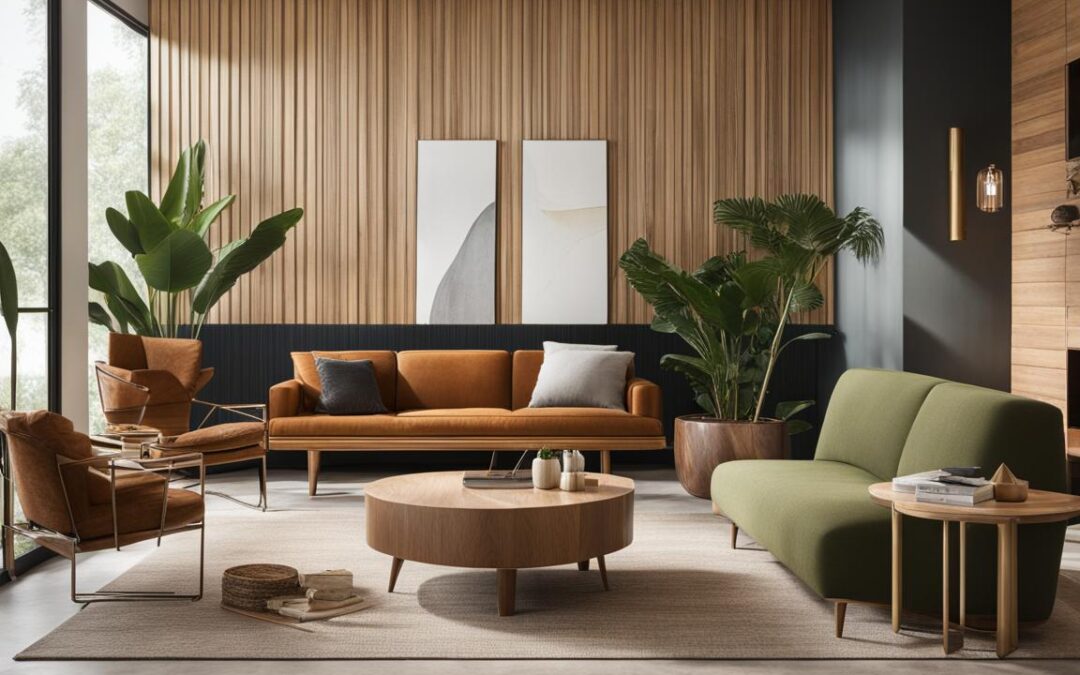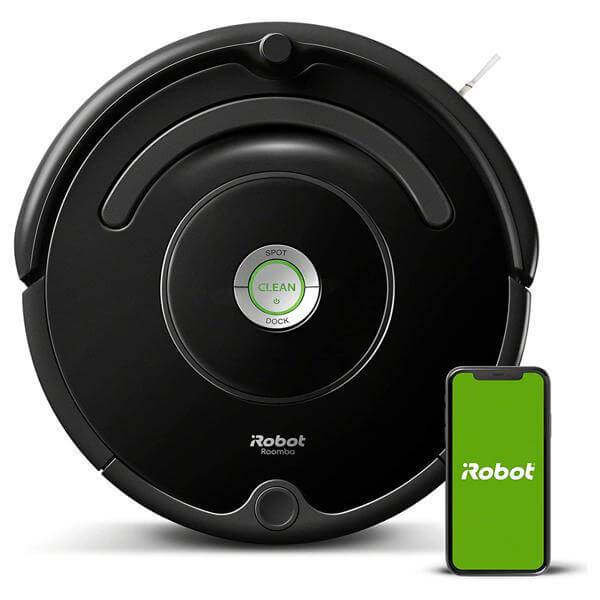Mid century modern design is not just a trend, but a sustainable design approach that marries timeless aesthetics with eco-conscious practices. In this article, we will delve into the concept of mid century modern sustainability in design today, exploring how it can be applied to interior design and room decor ideas. We will also discuss the importance of making environmentally conscious choices in our homes and the impact it can have on the planet.
Key Takeaways:
- Mid century modern design combines timeless aesthetics with sustainable principles.
- Choosing eco-friendly furniture and decor is essential for mid century modern sustainability.
- Preserving and updating existing homes reduces construction waste and environmental impact.
- Location plays a significant role in the sustainability of mid century modern homes.
- Embracing mid century modern sustainability can create visually appealing and environmentally responsible spaces.
The Greenest Building is the One That’s Already Built
When it comes to sustainable design principles, few statements ring truer than “The greenest building is one that’s already built.” This sentiment especially applies to mid century modern homes, which were constructed with a focus on quality and thoughtful design. These homes possess inherent sustainability characteristics that align perfectly with eco-conscious practices.
Preserving and updating existing mid century modern homes through sustainable remodels presents an opportunity to significantly reduce waste and environmental impact. By opting for renovations instead of tearing down and building new, we can contribute to the preservation of undeveloped land and minimize construction waste. Moreover, by utilizing the existing structural elements and materials, we can optimize resources and reduce the need for new production.
“The greenest building is the one that’s already built.” – Carl Elefante, FAIA
Mid century modern homes are known for their durability and timeless appeal. By embracing sustainable interior design principles, we can retain these qualities while enhancing the energy efficiency and overall sustainability of these spaces. From using eco-friendly materials to incorporating energy-efficient appliances, the possibilities for designing sustainable mid century modern homes are endless.
To illustrate the sustainability of mid century modern homes, let’s take a closer look at the following table:
| Characteristic | Sustainability Advantage |
|---|---|
| Durable Construction | Reduced need for frequent repairs and replacements, minimizing waste. |
| Open Floor Plans and Natural Light | Maximized access to natural light, reducing the need for artificial lighting and decreasing energy consumption. |
| Integration with Nature | Promotion of biophilic design, fostering a stronger connection with the natural environment and improving overall well-being. |
By recognizing the value of mid century modern homes and understanding how their characteristics align with sustainable design principles, we can make informed choices that promote both style and eco-consciousness. The next section will explore how these principles can be translated into green living in mid century modern homes.
Emphasizing Green Living in Mid Century Modern Homes
Mid century modern design is not only visually appealing but also lends itself well to eco-conscious living. By incorporating environmentally conscious practices into your mid century modern home, you can create a space that is both stylish and sustainable. From choosing eco-friendly furniture to incorporating energy-efficient appliances and implementing sustainable home decor, there are various ways to emphasize green living in your mid century modern home.
Eco-Friendly Furniture Choices
When selecting furniture for your mid century modern home, opt for pieces that are environmentally conscious. Look for furniture made from sustainable materials such as reclaimed or responsibly sourced wood, bamboo, or recycled materials. Vintage or second-hand furniture is also a great choice, as it reduces the demand for new production and extends the lifespan of existing pieces. By choosing eco-friendly furniture, you can significantly reduce your environmental footprint while still maintaining the mid century modern aesthetic.
Energy-Efficient Appliances
To further enhance the sustainability of your mid century modern home, consider upgrading to energy-efficient appliances. Look for appliances with high energy star ratings, which indicates that they are designed to consume less energy while still providing optimal performance. From refrigerators to washing machines and HVAC systems, energy-efficient appliances not only help reduce your carbon footprint but can also save you money on utility bills in the long run.
Environmentally Conscious Home Decor
When decorating your mid century modern home, opt for environmentally conscious choices. Consider using low VOC paint, which has lower levels of harmful chemicals compared to traditional paint. Incorporate natural materials such as organic cotton, hemp, or linen for curtains, rugs, and upholstery. Add indoor plants to improve air quality and create a connection with nature. These small choices can have a big impact on creating a healthier and more sustainable living environment.
Emphasizing green living in your mid century modern home not only benefits the environment but also creates a healthier and more sustainable space for you and your family. By making eco-friendly furniture choices, incorporating energy-efficient appliances, and opting for environmentally conscious home decor, you can truly embrace the essence of mid century modern sustainability.
The Impact of Mid Century Modern Remodeling on the Environment
When it comes to sustainable design, the choice to remodel existing mid century modern homes instead of building new ones can have a significant positive impact on the environment. By preserving and updating these architectural gems, we can minimize waste, reduce carbon emissions, and promote a more eco-friendly lifestyle.
One of the key environmental benefits of mid century modern remodeling is the preservation of undeveloped land. Instead of tearing down old homes and constructing new ones, remodeling allows us to make the most of existing structures and repurpose them for modern living. This helps to conserve natural resources and limit urban sprawl, ultimately protecting precious green spaces.
Another important aspect to consider is the reduction of construction waste. By remodeling existing homes, we can minimize the amount of materials that end up in landfills. This is a more sustainable approach compared to the production and transportation of new construction materials. Additionally, optimizing existing materials during the remodeling process helps to make the most of available resources and reduces overall waste.
| Environmental Benefits of Mid Century Modern Remodeling | Impact |
|---|---|
| Preservation of undeveloped land | Conserves natural resources and protects green spaces |
| Reduction of construction waste | Minimizes material sent to landfills and reduces resource consumption |
| Optimization of existing materials | Maximizes resource efficiency and minimizes waste |
By highlighting the advantages of mid century modern remodeling, we can inspire individuals to embrace sustainable design practices and make conscious choices that benefit both their homes and the environment. Now, let’s explore how we can create sustainable mid century modern spaces by making environmentally conscious furniture choices and embracing green living principles.
Creating Sustainable Mid Century Modern Spaces
When it comes to designing a mid century modern space that is not only stylish but also environmentally friendly, there are several key considerations to keep in mind. By making conscious choices when selecting furniture and decor, you can create a sustainable and eco-conscious living environment. Here are some tips and ideas to help you create a sustainable mid century modern space:
1. Opt for Vintage or Second-Hand Pieces
Choosing vintage or second-hand furniture is not only a sustainable choice but also adds character and uniqueness to your space. Look for pieces that are in good condition and made from high-quality materials. By giving these pieces a second life, you can reduce the demand for new furniture production and minimize waste.
2. Select Materials with Low Environmental Impact
When choosing furniture and decor, opt for materials with low environmental impact. Look for products made from sustainable materials such as bamboo, reclaimed wood, or recycled materials. Avoid products that contain harmful chemicals or contribute to deforestation. By selecting eco-friendly materials, you can create a healthier and more sustainable living space.
3. Support Ethical and Eco-Friendly Brands
Supporting ethical and eco-friendly brands is another way to promote sustainability in your mid century modern space. Research and choose brands that prioritize sustainability, fair trade practices, and environmentally conscious production methods. By supporting these brands, you are encouraging responsible consumption and contributing to a more sustainable future.
Creating a sustainable mid century modern space involves making thoughtful choices and considering the environmental impact of your furniture and decor selections. By opting for vintage or second-hand pieces, selecting materials with low environmental impact, and supporting ethical brands, you can create a space that is not only aesthetically pleasing but also contributes to a more eco-conscious way of living.
The Role of Location in Mid Century Modern Sustainability
When it comes to mid century modern sustainability, the role of location cannot be overlooked. The neighborhoods where these iconic homes are often found embody the principles of green living and sustainable interior design. Living in a mid century modern neighborhood offers numerous advantages that contribute to a more environmentally conscious lifestyle.
One of the key benefits of living in a mid century modern neighborhood is the reduced reliance on cars. These neighborhoods were designed with walkability in mind, with amenities, schools, and local businesses conveniently located within walking distance. This not only promotes a healthier and more active lifestyle but also reduces carbon emissions from daily commutes.
In addition to walkability, mid century modern neighborhoods often have excellent access to public transportation. The proximity to bus stops, subway stations, and other forms of public transit makes it easier for residents to choose more sustainable modes of transportation. By opting for public transportation over personal vehicles, individuals can further reduce their carbon footprint and contribute to a greener environment.
Furthermore, living in a mid century modern neighborhood fosters a sense of community and connection. The walkability and close proximity of homes encourage interaction among neighbors, leading to stronger community bonds. This sense of community is not only beneficial for social reasons but also for sustainability efforts. When individuals feel connected to their community, they are more likely to engage in collective actions and initiatives to promote sustainable living.
Overall, the role of location in mid century modern sustainability is crucial. The walkability, access to public transportation, and vibrant community atmosphere of these neighborhoods all contribute to a more environmentally conscious lifestyle. By embracing these advantages and incorporating sustainable practices into our daily lives, we can make a positive impact on our planet while enjoying the timeless beauty of mid century modern design.
Living in a mid century modern neighborhood offers numerous advantages that contribute to a more environmentally conscious lifestyle.
Sustainable Living in Mid Century Modern Neighborhoods
Living sustainably in a mid century modern neighborhood involves embracing the unique characteristics of these communities and making conscious choices to reduce our environmental impact. Here are some tips for sustainable living in mid century modern neighborhoods:
- Walk or bike whenever possible: Take advantage of the walkability of your neighborhood by walking or biking to nearby destinations instead of driving.
- Use public transportation: Utilize the public transportation options available in your area to reduce your reliance on personal vehicles.
- Support local businesses: Choose to shop at local businesses in your neighborhood, which helps support the local economy and reduces transportation emissions associated with larger retail chains.
- Engage in community initiatives: Get involved in community gardening projects, recycling initiatives, or other sustainability-focused activities within your neighborhood.
- Conserve energy and water: Practice energy-saving habits such as using energy-efficient appliances and turning off lights and electronics when not in use. Additionally, practice water conservation by limiting usage and installing water-saving fixtures.
By implementing these sustainable living practices in mid century modern neighborhoods, we can contribute to a greener future and preserve the unique charm of these communities for generations to come.
| Advantages of Living in a Mid Century Modern Neighborhood | Sustainable Practices in Mid Century Modern Neighborhoods |
|---|---|
| Reduced reliance on cars | Walking or biking whenever possible |
| Access to public transportation | Using public transportation |
| Strong sense of community | Supporting local businesses |
| Engaging in community initiatives | |
| Conserving energy and water |
Conclusion
Embracing mid century modern sustainability in design allows you to create visually stunning spaces while also making environmentally responsible choices. By considering eco-friendly mid century furniture, you can contribute to reducing your carbon footprint and supporting sustainable design principles.
Whether it’s opting for vintage or second-hand pieces, selecting materials with low environmental impact, or supporting ethical and eco-friendly brands, every decision you make can have a positive impact on the planet. By creating sustainable mid century modern spaces, you’re not only enhancing the beauty of your home but also taking a step towards a greener future.
Remember, the essence of mid century modern design is to combine timeless aesthetics with a commitment to sustainability. By preserving existing homes and considering their location in walkable neighborhoods, you are contributing to a more connected and eco-conscious community.
So, let’s continue to explore the possibilities of mid century modern sustainability and make a difference in our homes and communities. Together, we can create a more sustainable and beautiful world.
FAQ
What is mid century modern design?
Mid century modern design is a design style that emerged in the middle of the 20th century, characterized by its clean lines, simplicity, and integration with nature.
How does mid century modern design align with sustainable principles?
Mid century modern design emphasizes open spaces, natural light, and connection with nature, which are all principles that lend themselves well to sustainable living and eco-conscious choices.
What are some sustainable choices when furnishing a mid century modern home?
Sustainable furniture choices for mid century modern homes include opting for vintage or second-hand pieces, selecting materials with low environmental impact, and supporting ethical and eco-friendly brands.
What are the environmental benefits of remodeling mid century modern homes?
Remodeling existing mid century modern homes instead of building new ones can significantly reduce the environmental impact of construction by preserving undeveloped land, reducing construction waste, and optimizing existing materials.
How does the location of mid century modern homes contribute to sustainability?
Many mid century modern homes are situated in walkable neighborhoods close to local businesses, schools, and amenities, which reduces reliance on cars, increases access to public transportation, and fosters a more connected community.
How can mid century modern design make a positive impact on the planet?
By embracing mid century modern sustainability in design, we can create spaces that are not only visually appealing but also environmentally responsible, making eco-friendly choices that benefit the planet.





